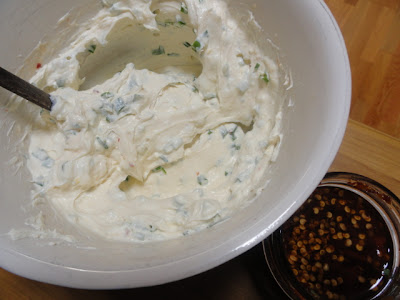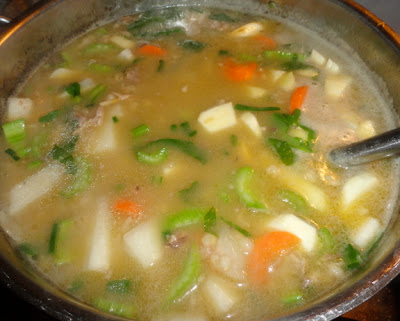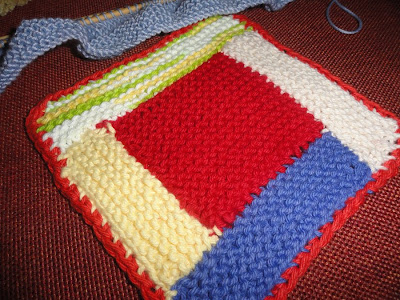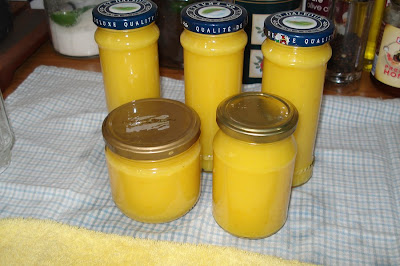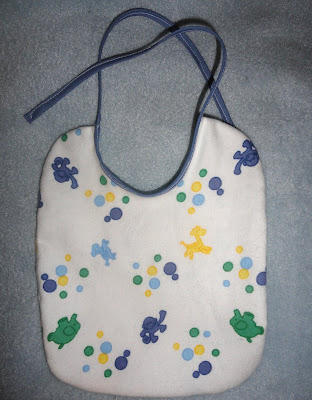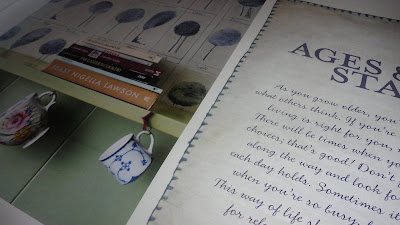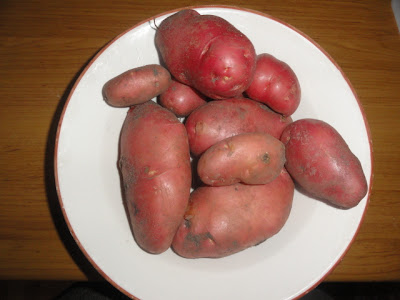When I have the time, I make sour cream, yoghurt and fresh yoghurt cheese which is a delicious spread, particularly on rye bread. I know many of you make your own yoghurt and I have written about it in the past so today let's talk about whey - the byproduct of yoghurt and cheese making in all its various forms.
This is my latest batch of yoghurt, made overnight using yoghurt from a previous batch. You can see the whey has separated from the milk solids when the jar lay on its side all night.
This is my latest batch of yoghurt, made overnight using yoghurt from a previous batch. You can see the whey has separated from the milk solids when the jar lay on its side all night.
Whey ready to use for baking or for lacto-fermentation.
Whey is sometimes seen as a waste product by some cheese makers, or it is given to calves or pigs to drink but it's a healthy live liquid that can be added to many recipes and used as a milk substitute. Whey keeps for a long time in the fridge. I have used it after it's been stored in the fridge here for nine weeks and it was fine. I use whey in baking, simply by substituting the milk portion of the recipe. Every cake or scone recipe I've given you here, you could substitute whey in place of the liquid recommended.
You can use whey in other recipes as well. Sauerkraut, for instance, is delicious made with whey. The process is called lacto-fermentation. Lacto-fermentation was used in earlier times to preserve vegetables for long periods of time when there were no fridges or freezers. Vegetables treated in this way have increased levels of vitamins and enzymes and the lactic acid in the fermented food promotes the growth of healthy flora in the gut, in the same way natural yoghurt does. Here are some very good recipes, using this simple process, from Nourishing Traditions. Even if you've never tried this kind of food before, give it a go. It's delicious, healthy and really easy to make.
SAUERKRAUT
Medium cabbage, cored and shredded
1 tablespoon caraways seeds (optional)
1 tablespoon sea salt (I use lake salt)
4 tablespoons whey
In a bowl, mix the cabbage with the caraway seeds, sea salt and whey. Pound it all together with the end of a rolling pin or a wooden meat mallet for about 10 minutes. You want to release the juices from the cabbage. Place this into a litre/quart size preserving/canning jar and press down very firmly until the juices come to the top of the cabbage. Make sure the top of the cabbage is one inch down from the top of the jar. Put the lid on and secure tightly and sit it on the bench for three days to ferment, then put it in the fridge. You can eat it then but it will get better the longer it's left to mature.
KIMCHI
1 head Chinese/Napa cabbage, cored and shredded
1 bunch chopped green onions
1 cup grated carrots
½ cup grated daikon radish
1 table spoon freshly grated ginger
3 cloves garlic, crushed
½ teaspoon dried chilli flakes - more or less according to your taste
1 tablespoon sea salt
4 tablespoons whey
Place all the ingredients in a large bowl and pound to release the vegetable juices. Then refer to the instructions above as it's the same technique. Leave it for three days on the bench to ferment, then store in the fridge. It will get better with age.
SALSA
4 medium tomatoes - peeled and diced
2 onions, finely chopped
¾ cup chopped chilli - hot or mild depending on your taste
6 cloves crushed garlic
1 bunch coriander/cilantro
1 teaspoon dry oregano
juice of 2 lemons
1 tablespoon sea salt
4 tablespoons whey
¼ filtered water
Mix all ingredients in a bowl and place in a litre/quart preserving/canning jar. Press it all down in to the jar and if the vegetables aren't completely covered, add a bit more water. The top of the vegetables must be one inch below the top of the jar. Put the lid on, leave on the bench for two days to ferment, then store in the fridge.
~*~*~*~
THE GREAT NAPPY HUNT
Okay everyone, hold on to your hats, the Great Nappy Hunt starts tomorrow! The Hunt is an online scavenger hunt across 150+ work-at-home parents' websites. My lovely friend Rebecca from Bean Sprout Bubba sent me some information about The Hunt and it's looks really exciting, with $10,000 worth of prizes to be won. Rebecca is sponsoring two prizes and I have to tell you that I bought two of the chrome nappy sprayers she has on offer, and they're brilliant. Rebecca has a special offer throughout September for registered Hunters.
You have to register to take part and when you register, a Hunt discount code will be emailed to you. Registration is free. You can find more information on Rebecca's website: Bean Sprouts Bubba. Good luck, Hunters!



